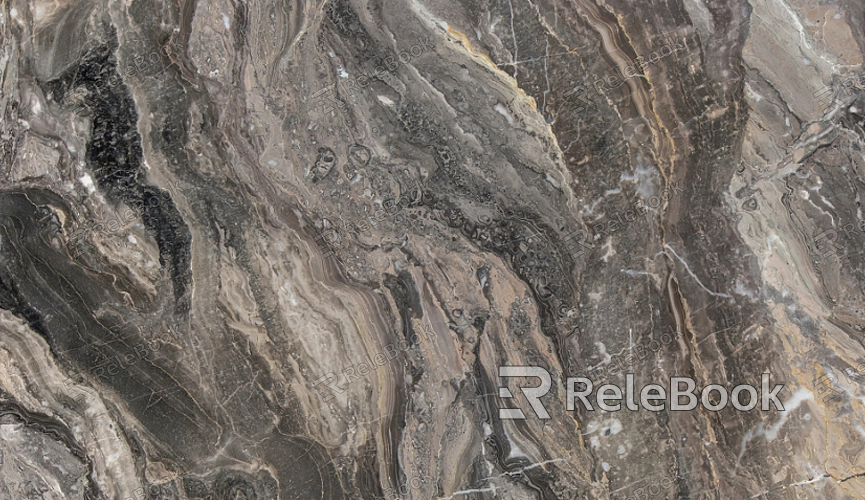How to Create Texture Tiling in Maya?
In 3D modeling and animation, applying textures is one key element for enhancing visual appeal. Maya, a professional 3D software, provides a robust set of tools that empower artists to achieve a variety of creative projects. Texture tiling is a common and practical technique that allows a texture to repeat across a surface, covering larger areas while maintaining detailed clarity. This article will guide you through the process of creating and applying texture tiling in Maya.

What Is Texture Tiling?
Texture tiling is a method of covering large surfaces by repeating a smaller texture. This technique helps avoid using excessively large texture files, saving memory and reducing load times while ensuring that the surface maintains detailed, seamless visuals. The core of texture tiling is making the image repeat within the UV space without visible seams along the edges.
Creating Seamless Textures
Before applying texture tiling, ensure that the texture itself is seamless. This means that when the texture repeats horizontally or vertically, there are no noticeable seams. To create a seamless texture, follow these steps:
Edit the texture in Photoshop or another image editing software. Use the “Offset” function under “Filter” to shift the texture so that the edges move to the center.
Fix any seams in the center using the clone or stamp tool to create a smooth transition.
Save the final image as a seamless texture to be used in Maya.

Importing the Texture into Maya
Once you have a seamless texture, the next step is to import and apply it to a model in Maya.
Select the object to which you want to apply the texture in Maya.
Open the “Hypershade” (Material Editor) and create a new material, such as "Lambert" or "Phong."
Connect the texture image to the material’s "Color" attribute, which can be accessed through the "Attribute Editor."
Setting Texture Tiling Properties
To create the tiling effect, adjust the "place2d texture" node parameters within the material.
Select the "Place2DTexture" node that controls the texture.
Input a value greater than 1 in the “Repeat UV” parameters. For example, setting both “U” and “V” to 2 will make the texture repeat twice in both the horizontal and vertical directions.
Adjust the “Repeat UV” values according to the needs of your project to achieve the appropriate texture coverage.
Checking and Optimizing Texture Tiling
After applying texture tiling, check the effect in the “Viewport” to ensure there is no stretching or distortion. If issues arise, adjust the object’s UV mapping to correct them.
Use the “UV Editor” tool to view and edit the object’s UV layout.
If the UV mapping is uneven, use tools such as “automatic mapping” or “planar mapping” to regenerate or adjust it.
Ensure that UV boundaries are smooth and avoid overlapping areas to maintain uniform texture distribution.
Using Node Networks for Advanced Control
Maya’s node system allows for more advanced texture control. Through “Hypershade,” artists can connect multiple “Place2DTexture” nodes to a single texture to apply different tiling settings and create more complex effects.
In “Hypershade,” link “Place2DTexture” nodes to various materials or texture nodes to control different surface areas’ tiling patterns.
Use the “Blend Colors” node to mix multiple textures and achieve richer visual effects.
Rendering and Final Adjustments
After confirming the texture tiling effect, run a test render to ensure the appearance is as expected in the rendering engine. Optimize further with these steps:
Check the render settings to ensure lighting and material reflections accurately display texture details.
Use “Render View” to inspect the rendered results from different angles and verify that the texture seams are natural and flawless.
Adjust “Repeat UV” or UV mapping based on the render outcome to fine-tune the visual effect.
Texture tiling is an essential step for achieving high-quality scenes and models in Maya. Mastering how to create seamless textures, set tiling parameters, and optimize render results will help you achieve outstanding visual quality in your 3D projects. If you’re looking for high-quality 3D models and textures, visit Relebook for downloads to boost your creative efficiency and project quality.
FAQ
How do I ensure the texture doesn’t get distorted?
Verify that the UV mapping is evenly laid out and avoid excessive stretching or compression.
What tools can I use to create seamless textures?
You can use image editing software like Photoshop or Substance Painter to create seamless textures.
How can I apply different tiling effects to other materials?
Create multiple “Place2DTexture” nodes in “Hypershade” and set different “Repeat UV” values for each.

